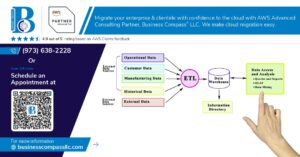Are you tired of losing customers at the checkout? 🛒💔 In today’s fast-paced e-commerce world, a seamless payment process can make or break your online business. Enter Amazon Pay – a game-changing solution that’s revolutionizing the way we handle transactions.
Imagine offering your customers the trust and convenience of Amazon’s payment system, right on your own website. With over 300 million active Amazon customers worldwide, implementing Amazon Pay could be the key to unlocking explosive growth for your business. But how do you get started? What does it take to design and implement this powerful payment solution?
In this comprehensive guide, we’ll walk you through everything you need to know about Amazon Pay. From understanding its core features to setting it up for your business, designing a smooth customer experience, and implementing the API, we’ve got you covered. Let’s dive in and discover how you can harness the power of Amazon Pay to supercharge your online sales! 🚀💳
Understanding Amazon Pay
A. What is Amazon Pay?
Amazon Pay is a secure online payment service that leverages Amazon’s trusted platform to facilitate transactions for third-party merchants. It allows customers to use their Amazon accounts to make purchases on external websites and apps, streamlining the checkout process and enhancing user experience.
B. Benefits for businesses
Amazon Pay offers numerous advantages for businesses:
- Increased conversion rates
- Access to Amazon’s large customer base
- Enhanced trust and credibility
- Simplified integration process
- Fraud protection
Here’s a comparison of key benefits:
| Benefit | Description |
|---|---|
| Higher conversions | Familiar checkout process increases likelihood of purchase completion |
| Expanded reach | Tap into Amazon’s vast customer network |
| Trust factor | Leverage Amazon’s reputation for secure transactions |
| Easy setup | Straightforward integration with existing e-commerce platforms |
| Fraud protection | Amazon’s advanced fraud detection systems safeguard transactions |
C. Benefits for customers
Customers enjoy several perks when using Amazon Pay:
- Convenient checkout: Use existing Amazon account information
- Secure transactions: Benefit from Amazon’s robust security measures
- Consistent experience: Familiar interface across different websites
- A-to-z Guarantee: Added protection on eligible purchases
D. How it differs from other payment gateways
Amazon Pay distinguishes itself from other payment gateways in several ways:
- Brand recognition: Leverages Amazon’s trusted reputation
- Large user base: Millions of active Amazon account holders
- Multi-platform support: Works on websites, mobile apps, and Alexa-enabled devices
- Seamless integration: Easy setup for businesses already selling on Amazon
Now that we have a solid understanding of Amazon Pay and its benefits, let’s explore how to set it up for your business.
Setting up Amazon Pay for your business
A. Creating an Amazon Pay account
To begin setting up Amazon Pay for your business, you’ll need to create an Amazon Pay account. This process is straightforward and can be completed in a few simple steps:
- Visit the Amazon Pay website
- Click on the “Sign Up” button
- Choose between “I’m a new Amazon customer” or “I’m an existing Amazon customer”
- Fill in the required information, including:
- Business name
- Contact details
- Website URL
Once you’ve completed these steps, you’ll have access to your Amazon Pay dashboard, where you can manage your account and begin the integration process.
B. Verifying your business information
After creating your account, you’ll need to verify your business information to ensure compliance and security. This typically involves:
- Providing official business documents
- Confirming your business address
- Verifying your bank account details
Amazon Pay may require additional information depending on your business type and location. It’s crucial to provide accurate and up-to-date information to avoid delays in the approval process.
C. Obtaining necessary API credentials
Once your business is verified, you’ll receive your API credentials, which are essential for integrating Amazon Pay into your e-commerce platform. These credentials include:
| Credential | Description |
|---|---|
| Merchant ID | Unique identifier for your Amazon Pay account |
| Access Key ID | Used for API authentication |
| Secret Access Key | Paired with Access Key ID for secure API calls |
Keep these credentials secure, as they provide access to your Amazon Pay account and transaction data.
D. Integrating with your existing e-commerce platform
With your API credentials in hand, you can now integrate Amazon Pay with your e-commerce platform. Many popular platforms offer built-in plugins or extensions for Amazon Pay, simplifying the integration process. If your platform doesn’t have a pre-built solution, you’ll need to use the Amazon Pay API to create a custom integration.
Key steps in the integration process include:
- Installing the Amazon Pay plugin (if available)
- Configuring the plugin with your API credentials
- Customizing the checkout flow to include Amazon Pay as a payment option
- Testing the integration thoroughly before going live
By following these steps, you’ll be well on your way to offering Amazon Pay as a payment option for your customers, potentially increasing conversions and improving the overall shopping experience on your e-commerce site.
Designing the customer experience
A. Placement of Amazon Pay button
The strategic placement of the Amazon Pay button is crucial for maximizing conversions. Consider these key locations:
- Product pages
- Shopping cart
- Checkout page
- Mini cart or floating cart
For optimal visibility, place the button:
- Above the fold
- Near other payment options
- In a contrasting color
| Placement | Pros | Cons |
|---|---|---|
| Product pages | Early conversion | May clutter design |
| Shopping cart | Clear intent to purchase | Missed early conversions |
| Checkout page | Guaranteed visibility | Late in the process |
| Mini cart | Always visible | Limited space |
B. Optimizing the checkout flow
Streamline your checkout process to reduce friction and increase conversions:
- Minimize form fields
- Enable guest checkout
- Implement address validation
- Show progress indicators
- Offer order summary
C. Mobile-friendly design considerations
With increasing mobile traffic, ensure a smooth mobile experience:
- Use responsive design
- Implement larger touch targets
- Simplify forms for mobile input
- Utilize mobile-specific features (e.g., fingerprint authentication)
D. Customizing the look and feel
Tailor the Amazon Pay integration to match your brand:
- Use consistent color schemes
- Incorporate your logo
- Adjust button size and style
- Customize error messages and confirmation pages
Remember, a seamless and branded experience builds trust and encourages repeat purchases. Now that we’ve covered the design aspects, let’s move on to the technical implementation of the Amazon Pay API.
Implementing Amazon Pay API
Choose the right integration method
When implementing Amazon Pay API, selecting the appropriate integration method is crucial for your business needs. Consider the following options:
- Express Integration: Quick setup for small businesses
- Custom Integration: Flexible solution for larger enterprises
- Checkout v2: Streamlined checkout experience
| Integration Method | Complexity | Customization | Best For |
|---|---|---|---|
| Express Integration | Low | Limited | Small businesses, simple setups |
| Custom Integration | High | Extensive | Large enterprises, complex needs |
| Checkout v2 | Medium | Moderate | Medium-sized businesses |
Server-side vs. client-side implementation
Deciding between server-side and client-side implementation depends on your security requirements and user experience goals:
- Server-side: Enhanced security, better control over transactions
- Client-side: Faster checkout, improved user experience
Handling payment authorizations
Implement robust payment authorization processes:
- Initiate authorization request
- Verify payment details
- Confirm successful authorization
- Handle declined transactions gracefully
Managing refunds and cancellations
Efficiently manage refunds and cancellations to maintain customer satisfaction:
- Implement a clear refund policy
- Automate refund processes where possible
- Handle partial and full refunds
- Update inventory and order status accordingly
Error handling and troubleshooting
Develop a comprehensive error handling strategy:
- Implement clear error messages
- Log all API interactions for debugging
- Set up automated alerts for critical errors
- Create a troubleshooting guide for common issues
Now that we’ve covered the key aspects of implementing Amazon Pay API, let’s move on to testing and launching your integration.
Testing and launching
Setting up a sandbox environment
Before launching Amazon Pay on your live site, it’s crucial to set up a sandbox environment for testing. This allows you to simulate transactions without processing real payments. Here’s how to set up your sandbox:
- Log in to your Amazon Pay account
- Navigate to the “Integration” section
- Select “Sandbox” mode
- Generate sandbox API credentials
- Implement these credentials in your test environment
| Sandbox Feature | Purpose |
|---|---|
| Test accounts | Simulate customer transactions |
| Simulated errors | Test error handling |
| Instant settlement | Verify payment flow |
Conducting thorough testing
Once your sandbox is set up, conduct comprehensive testing to ensure a smooth integration:
- Test various payment scenarios (successful payments, refunds, cancellations)
- Verify error handling and edge cases
- Check for proper data transmission between your site and Amazon Pay
- Ensure seamless user experience across different devices and browsers
Addressing common integration issues
During testing, you may encounter some common issues. Here’s how to address them:
- API authentication errors: Double-check your credentials and ensure proper implementation
- Callback URL misconfigurations: Verify your endpoint URLs in the Amazon Pay dashboard
- Data mismatch: Ensure consistency between your order data and what’s sent to Amazon Pay
- Button rendering issues: Check for JavaScript conflicts and proper placement in your HTML
Going live with Amazon Pay
After thorough testing and issue resolution, you’re ready to go live:
- Switch from sandbox to production mode in your Amazon Pay account
- Update your integration with production API credentials
- Perform final checks on your live site
- Monitor initial transactions closely to ensure everything is working as expected
With these steps completed, you’ve successfully launched Amazon Pay on your site. Next, we’ll explore how to monitor and optimize your Amazon Pay integration for optimal performance.
Monitoring and optimizing performance
Analyzing transaction data
To effectively monitor and optimize Amazon Pay performance, start by analyzing transaction data. This provides valuable insights into your customers’ payment behaviors and preferences.
| Metric | Description | Importance |
|---|---|---|
| Conversion Rate | Percentage of customers completing purchases | High |
| Average Order Value | Average amount spent per transaction | Medium |
| Payment Method Usage | Frequency of Amazon Pay vs. other methods | High |
| Abandonment Rate | Percentage of incomplete transactions | High |
Use Amazon Pay’s reporting tools to track these metrics regularly. Look for patterns and trends that can inform your optimization strategy.
Improving conversion rates
Based on your transaction data analysis, implement targeted improvements to boost conversion rates:
- Streamline the checkout process
- Optimize page load times
- Offer guest checkout options
- Display trust badges prominently
- Provide clear error messages and recovery options
Addressing customer feedback
Customer feedback is crucial for continual improvement. Regularly review:
- Customer service inquiries
- Online reviews and ratings
- Social media mentions
Use this feedback to identify pain points and areas for enhancement in your Amazon Pay implementation.
Staying updated with new features
Amazon Pay frequently releases new features and updates. Stay informed by:
- Subscribing to Amazon Pay’s newsletter
- Attending webinars and virtual events
- Regularly checking the Amazon Pay developer portal
- Engaging with the Amazon Pay community forums
Implement relevant new features promptly to maintain a competitive edge and provide the best possible customer experience.
By consistently monitoring these aspects and making data-driven improvements, you can optimize your Amazon Pay performance and drive business growth.
Designing and implementing Amazon Pay can significantly enhance your e-commerce platform, offering customers a seamless and trusted payment option. By following the steps outlined in this guide, from understanding the basics to setting up your account, designing the user experience, and implementing the API, you can successfully integrate Amazon Pay into your business. Remember to thoroughly test your implementation before launch and continuously monitor its performance to ensure optimal results.
As you embark on this journey, keep in mind that Amazon Pay not only streamlines the checkout process but also leverages the trust and familiarity customers have with Amazon. This can lead to increased conversions and customer satisfaction. By staying up-to-date with Amazon Pay’s features and best practices, you can continue to refine and improve your payment system, ultimately driving growth for your online business.




















